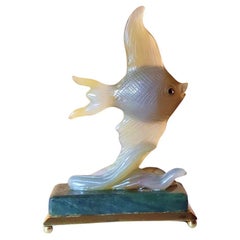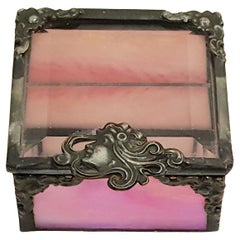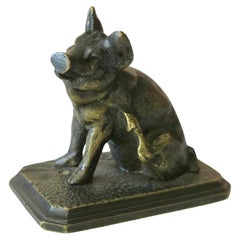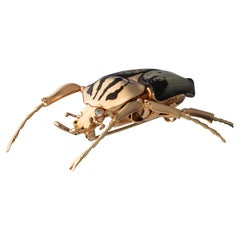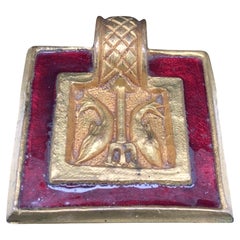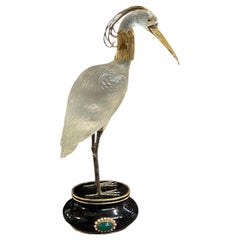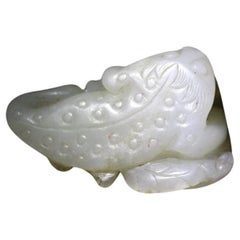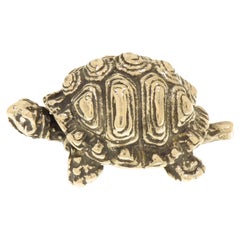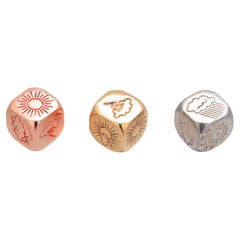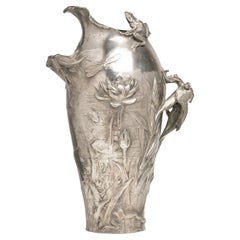French Figurines and Sculptures
Mid-20th Century French Figurines and Sculptures
Agate, Gold Plate, Sterling Silver
1890s Art Nouveau Antique French Figurines and Sculptures
Gilt Metal, Mixed Metal, Silver Plate, Brass, Bronze
Mid-19th Century Empire Antique French Figurines and Sculptures
Bronze
21st Century and Contemporary Artist French Figurines and Sculptures
Diamond, 18k Gold
1970s Modernist Vintage French Figurines and Sculptures
Bronze, Gilt Metal
20th Century French Figurines and Sculptures
Chalcedony, Coral, Rock Crystal, 18k Gold
Late 19th Century Art Nouveau Antique French Figurines and Sculptures
Late 19th Century Art Nouveau Antique French Figurines and Sculptures
1950s Vintage French Figurines and Sculptures
Ruby, Gold, 14k Gold
1870s Neoclassical Antique French Figurines and Sculptures
Silver Plate
1920s Art Deco Vintage French Figurines and Sculptures
Crystal
19th Century Gilded Age Antique French Figurines and Sculptures
Bronze
21st Century and Contemporary Artist French Figurines and Sculptures
18k Gold, Yellow Gold
Mid-20th Century Modernist French Figurines and Sculptures
20th Century Art Deco French Figurines and Sculptures
Agate, Diamond, Emerald, Rock Crystal, Gold, Silver
21st Century and Contemporary Artist French Figurines and Sculptures
18k Gold, Rose Gold, Enamel
20th Century French Figurines and Sculptures
Amethyst, Diamond, Jade, Quartz, Rock Crystal, Ruby, Turquoise, Gold, Si...
Mid-20th Century Modernist French Figurines and Sculptures
Bronze, Gilt Metal
21st Century and Contemporary French Figurines and Sculptures
Diamond, Lapis Lazuli, Rock Crystal, Gold, Silver
20th Century French Figurines and Sculptures
Rhodocrosite, Silver
1990s Modernist French Figurines and Sculptures
Gold, 18k Gold
1910s Art Nouveau Vintage French Figurines and Sculptures
Crystal, Opal, Gold, 18k Gold
20th Century Art Deco French Figurines and Sculptures
Rock Crystal, Ruby, Blue Sapphire, Silver
Late 19th Century Belle Époque Antique French Figurines and Sculptures
Ruby, 18k Gold, Yellow Gold
19th Century Antique French Figurines and Sculptures
Bronze
1870s Napoleon III Antique French Figurines and Sculptures
Bronze
1790s Neoclassical Antique French Figurines and Sculptures
Gold, 18k Gold, Silver
Late 19th Century Napoleon III Antique French Figurines and Sculptures
Bronze
1950s Artist Vintage French Figurines and Sculptures
Pink Sapphire, Gold
Mid-19th Century Antique French Figurines and Sculptures
1970s Retro Vintage French Figurines and Sculptures
Silver
21st Century and Contemporary Arts and Crafts French Figurines and Sculptures
Crystal, Amethyst
Mid-20th Century Modernist French Figurines and Sculptures
Jade
Early 19th Century Victorian Antique French Figurines and Sculptures
Bronze
1980s Retro Vintage French Figurines and Sculptures
Diamond, Emerald, 18k Gold, Enamel
2010s French Figurines and Sculptures
21st Century and Contemporary French Figurines and Sculptures
Diamond, Blue Sapphire, Spinel, Tsavorite, 18k Gold, Yellow Gold
1940s Modernist Vintage French Figurines and Sculptures
Bronze
2010s French Figurines and Sculptures
Silver
20th Century Gilded Age French Figurines and Sculptures
Bronze
Early 20th Century Gilded Age French Figurines and Sculptures
Bronze
Mid-20th Century Contemporary French Figurines and Sculptures
Gold Plate, Rose Gold, Silver, Sterling Silver
Early 1900s Art Nouveau Antique French Figurines and Sculptures
Mid-20th Century Art Nouveau French Figurines and Sculptures
Silver, Enamel
1890s Victorian Antique French Figurines and Sculptures
Diamond, Ruby, Tiger's Eye, Gold, 18k Gold
Mid-20th Century Modern French Figurines and Sculptures
Silver, Sterling Silver
1960s Vintage French Figurines and Sculptures
Diamond, Onyx, Gold, 18k Gold
1990s French Figurines and Sculptures
1960s Vintage French Figurines and Sculptures
Agate, Ruby, Gold, 18k Gold
Early 20th Century Art Deco French Figurines and Sculptures
Diamond, Jade, Ruby
1920s Art Deco Vintage French Figurines and Sculptures
19th Century Classical Greek Antique French Figurines and Sculptures
Bronze
19th Century Artist Antique French Figurines and Sculptures
Bronze
